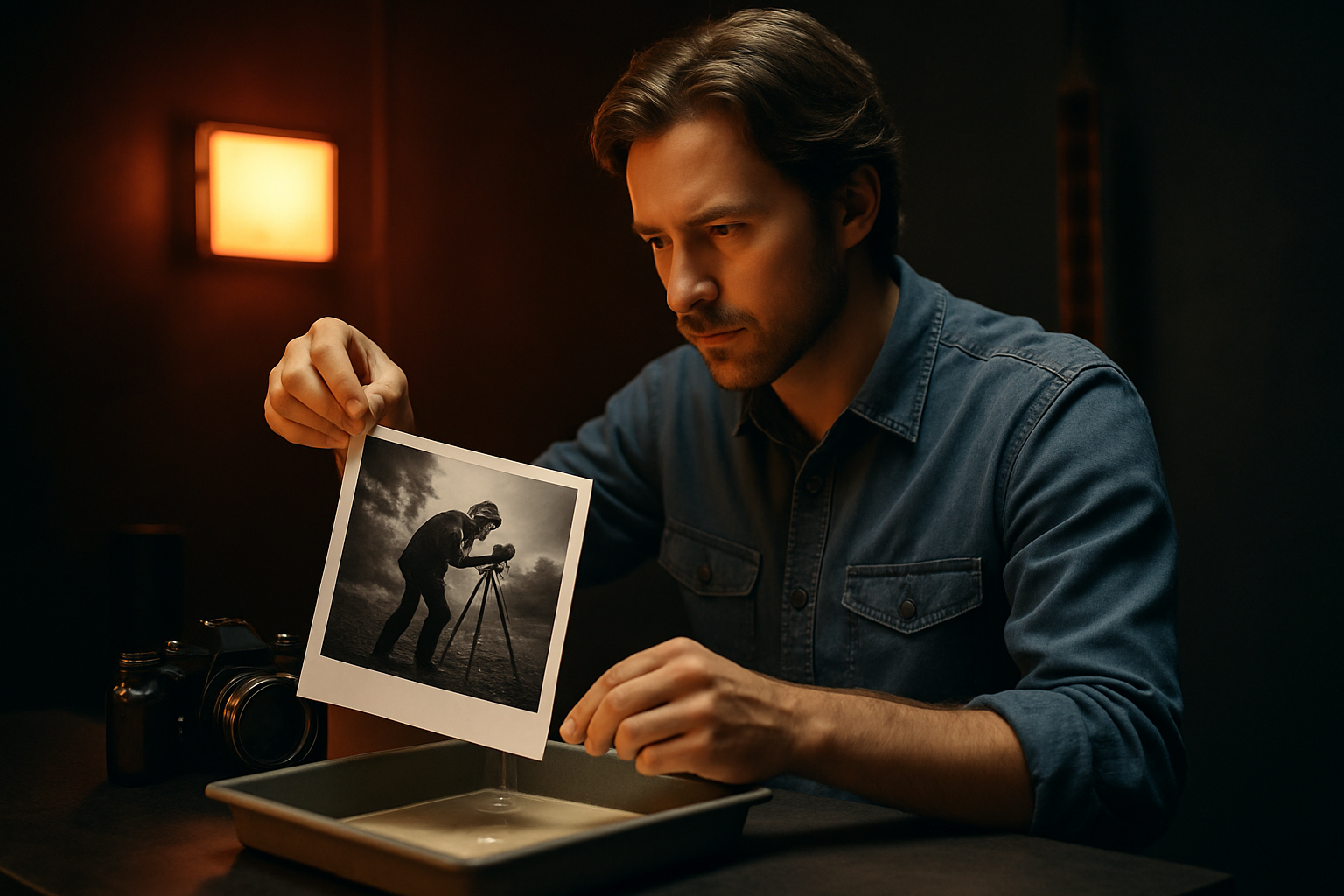The Resurgence of Analog Photography in the Digital Age
In an era dominated by smartphones and instant digital gratification, a surprising trend is emerging in the world of photography. Analog photography, once considered obsolete, is experiencing a remarkable revival. This article explores the factors driving this resurgence, the artists at its forefront, and the impact it's having on visual culture and the photography industry.

This renewed interest in analog photography goes beyond mere nostalgia. It represents a desire for a more intentional and deliberate approach to image-making. The limitations of film force photographers to slow down, carefully consider each shot, and engage more deeply with their subjects and surroundings.
The Aesthetic Appeal of Imperfection
One of the key drivers behind the analog revival is the unique aesthetic that film photography offers. In a world where digital perfection has become the norm, the imperfections and unpredictability of film have become increasingly appealing. The grain, light leaks, and subtle color shifts characteristic of analog photography lend images a distinctive warmth and character that many find lacking in digital captures.
This aesthetic has found particular resonance among younger generations who have grown up in a primarily digital world. For them, the analog look represents something authentic and tangible in an increasingly virtual landscape.
Film Photography in Contemporary Art
The resurgence of analog photography has not been limited to hobbyists and enthusiasts. Many contemporary artists have embraced film as a medium for creative expression, pushing the boundaries of what can be achieved with traditional photographic processes.
Artists like Alec Soth and Nan Goldin continue to work predominantly with film, creating powerful and evocative images that challenge viewers’ perceptions. Their work demonstrates that analog photography is not just a relic of the past, but a vital and evolving art form capable of addressing contemporary issues and emotions.
The Role of Social Media and Online Communities
Paradoxically, the digital world has played a significant role in fueling the analog revival. Social media platforms have provided spaces for film photographers to share their work, exchange knowledge, and build communities. Hashtags like #FilmIsNotDead and #BelieveInFilm have united analog enthusiasts worldwide, creating a vibrant and supportive ecosystem.
Online forums and YouTube channels dedicated to film photography have become valuable resources for those looking to learn or rediscover analog techniques. This digital infrastructure has made it easier than ever for newcomers to enter the world of film photography, despite the declining availability of traditional resources.
The Industry Responds
As interest in analog photography has grown, the photography industry has taken notice. Companies that had previously discontinued film products have reintroduced them, while new startups have emerged to cater to the analog market.
Kodak, for instance, brought back its iconic Ektachrome film in 2018 after a six-year hiatus, responding to demand from both professional and amateur photographers. Similarly, Polaroid has reinvented itself, releasing new instant cameras and films that blend analog charm with modern convenience.
Educational Institutions Embrace Film
The analog revival has also made its way into educational institutions. Many photography programs that had previously shifted entirely to digital are now reintegrating film into their curricula. Educators argue that working with film provides students with a deeper understanding of photographic principles and helps develop a more thoughtful approach to image-making.
This trend extends beyond formal education, with workshops and courses dedicated to analog photography gaining popularity. These offerings cater to a diverse audience, from complete beginners to experienced digital photographers looking to expand their skills.
The Environmental Consideration
While the resurgence of analog photography has been largely positive, it has also raised questions about environmental sustainability. The chemical processes involved in developing film and prints have a significant environmental impact, a concern that had been partially mitigated by the shift to digital.
However, proponents of analog photography argue that the slower, more deliberate nature of film encourages less wasteful practices. They also point out that the longevity of physical prints may ultimately be more sustainable than the constant upgrading and data migration required by digital photography.
Looking to the Future
As we look ahead, it’s clear that analog photography is more than just a passing trend. Its resurgence represents a fundamental shift in how we think about image-making and visual culture. While digital photography will undoubtedly remain dominant, the renewed interest in analog processes suggests a future where both mediums coexist and complement each other.
The analog revival reminds us of the enduring power of tangible, physical media in an increasingly digital world. It challenges us to slow down, to consider our subjects more carefully, and to appreciate the beauty of imperfection. As this movement continues to evolve, it promises to shape the future of photography in profound and unexpected ways.





